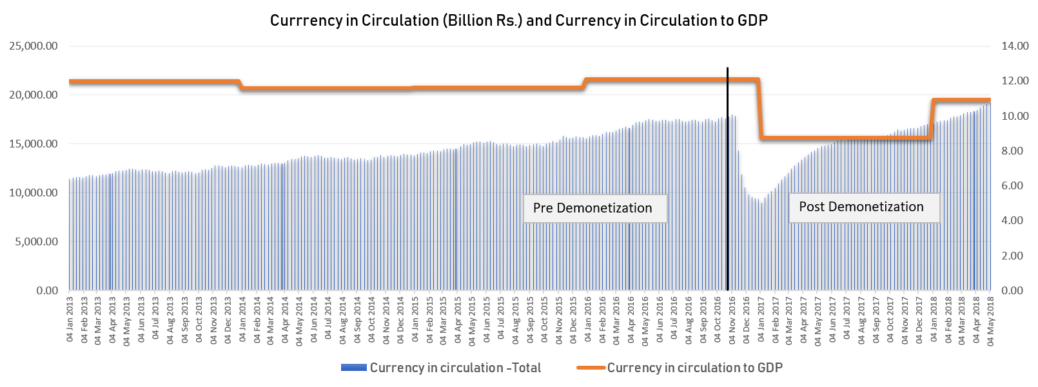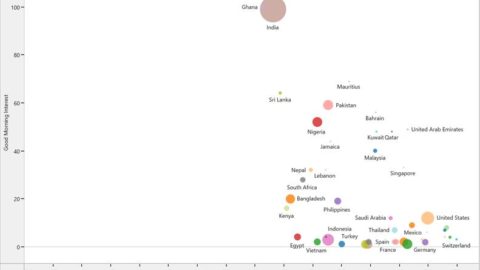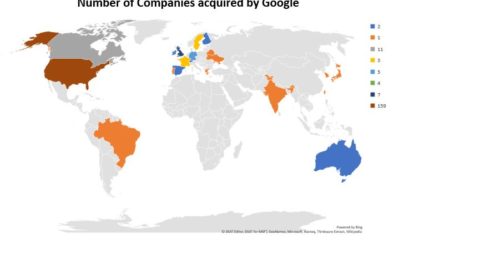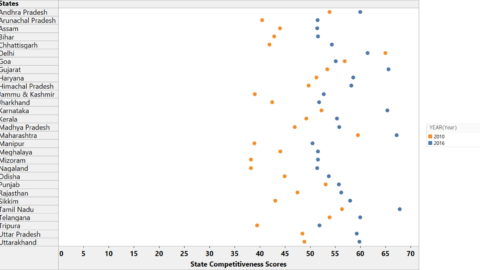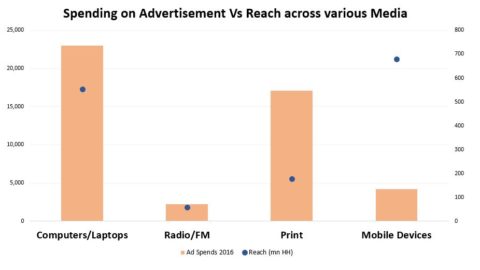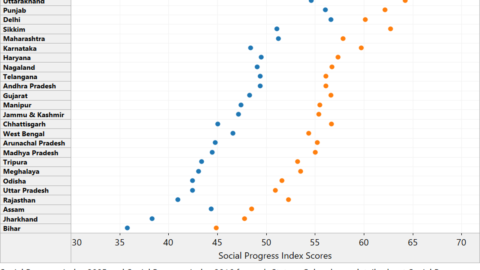Based on the trend displayed in the graph above, it is evident that there is a stark difference in the proportion of cash in the GDP, hinting towards a digitization push. Post the demonetization, cash flow in the economy dipped immediately with a rise to match the pre-demonetization era, however, the share of currency in circulation in GDP has only fallen, with a slight hike in January 2018. This hints that digitization push has formed a major part of the GDP.
In response to the cash crunch, the finance ministry issued a note saying the situation has come about due to an “unusual spurt in currency demand in the country”. Other probable reasons have been the elections that might have led to the problem of ‘cash hoarding’ in poll-bound states. The other two causes remain the dip in the digital transactions due to strict KYC norms, as well as the RBIs lack of clarity on the printing of currency, and if the focus is on printing of small denomination notes. Even though, the share of currency in circulation in GDP shares has fallen, the waning interest of digitization of payments is not a good sign. There is a need to make digital payments easier to boost the economy.
